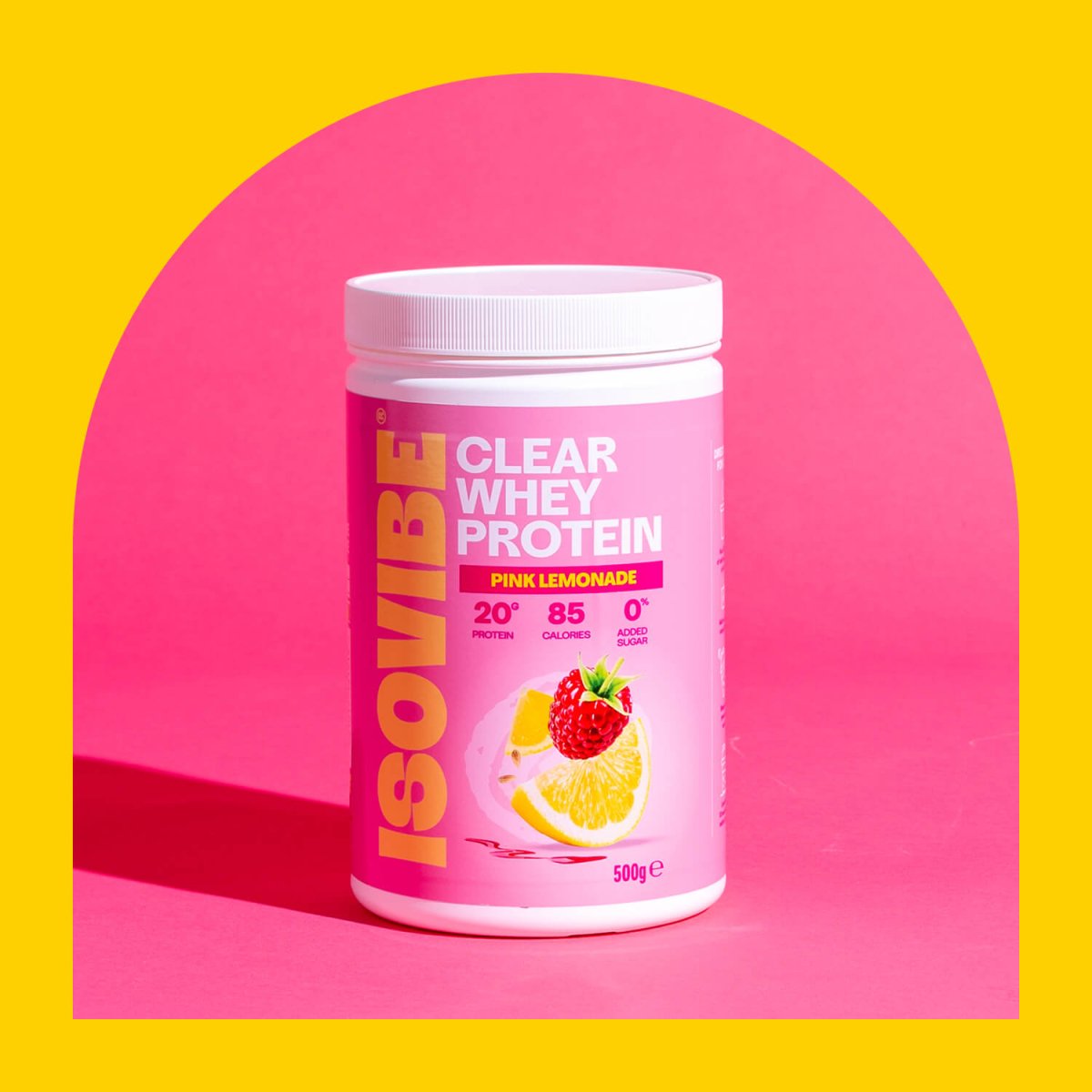The Science Behind Protein Absorption: How Your Body Uses It
Ever wondered what actually happens to that protein shake after you drink it? You know, the one you grab post-workout when your hair's in a messy bun and you're feeling properly knackered? You're about to discover the absolutely fascinating process that turns protein into muscle-building fuel – and so much more!
Understanding how your body processes protein will help you maximise your fitness results, get that healthy glow everyone's asking about, and make smarter nutrition choices. Plus, you'll finally have the knowledge to settle those gym debates once and for all!
Let's break down this complex process in simple terms – think of it as the ultimate behind-the-scenes look at your body's incredible protein factory. Trust me, it's way cooler than it sounds!
Your Body's Amazing Protein Transformation Station
Think of protein digestion like your favourite beauty routine – it's a sophisticated, multi-step process that starts the moment you consume your shake. Your body is honestly quite clever at this whole process, working away like the ultimate multitasker who somehow manages to look effortless whilst doing it all!
Stage 1: Where the Magic Starts (Your Stomach's Got This!)
Your protein absorption process kicks off the moment that shake hits your stomach. Here, powerful stomach acid and an enzyme called pepsin begin dismantling protein structures like they're solving the world's most complex puzzle. At this stage, different proteins behave like completely different personalities at brunch:
Whey protein is like that friend who's always ready to go: she arrives on time, orders quickly, and never keeps anyone waiting. It comes from the liquid part of milk and stays relatively soluble in your stomach. It flows through quickly and easily, no drama whatsoever.
Casein protein is a slow one. It makes up about 80% of milk protein and gives milk its white, creamy appearance. When casein hits your stomach acid, it forms thick, gel-like curds (similar to how cheese is made). These curds take much longer to break down and move through your digestive system.
This fundamental difference explains why clear whey protein absorbs so much faster than traditional milky protein shakes or casein supplements. It's basically the difference between a quick coffee date and a three-course dinner with your mum; both lovely, but very different timings!
Stage 2: Your Small Intestine - The Real MVP
The next stage of the journey happens in your small intestine. Pancreatic enzymes called proteases break proteins down into their basic building blocks: amino acids.
These amino acids are then absorbed through your intestinal wall and enter your bloodstream like they're being fast-tracked through VIP. From there, they're distributed throughout your body like the world's most efficient personal delivery service, going wherever they're needed most – whether that's building lean muscle, strengthening your hair and nails, or supporting your immune system to keep you feeling fantastic.
Quick Fix or Long Game? Your Guide to Protein Types
Not all proteins are created equal when it comes to absorption speed. The main difference comes down to how they behave in your stomach:
Whey Protein: Your Quick-Fix Queen
Whey is the liquid portion of milk – what's left after milk is curdled to make cheese. Because it's already separated from the thicker milk proteins, it moves quickly through your digestive system like that friend who never keeps you waiting and always texts back immediately.
-
Absorption rate: 8-10 grams per hour (impressive, right?)
-
Peak amino acids in blood: 60-90 minutes
-
Complete absorption: Roughly 2 hours for a 20g serving
Clear Whey Isolate is particularly speedy because it's been further processed to remove almost everything except pure protein, and doesn't form stomach curds like traditional milky proteins.
Casein: The Steady Bestie Who's Always There
Casein is the main protein that gives milk its creamy, white appearance. When it hits your stomach acid, it forms thick curds that your body has to slowly break down over hours – like a time-release vitamin for protein, but way more interesting.
-
Absorption rate: Less than 5 grams per hour (slow and steady!)
-
Peak amino acids in blood: 3-4 hours
-
Complete absorption: 6-7 hours
Other Proteins: The Supporting Cast
These proteins all have their moment to shine:
-
Egg protein: 3-4 hours (reliable and classic)
-
Soy protein: 3-4 hours (plant-powered goodness)
-
Pea protein: 3-4 hours (another fantastic plant option)
What Makes Protein Actually Work for You?
Several factors determine how effectively your body uses absorbed amino acids, not just for muscle building, but for maintaining gorgeous hair, glowing skin, strong nails, immune function, and balanced hormone production.
1. Complete Amino Acid Profile: Getting All the Good Stuff
Your body needs all essential amino acids present to build new muscle tissue effectively. Think of it like having all the right ingredients for your favourite recipe – missing even one essential amino acid creates a bottleneck that stops the whole beautiful process.
This is particularly important for us women, as we need these amino acids for everything from maintaining healthy hair and nails to supporting our immune system and creating neurotransmitters that affect mood and energy levels. It's basically internal self-care at its finest – who doesn't want that?
2. Your Training Status: Why Movement Matters
Recent resistance exercise dramatically increases your muscle's sensitivity to amino acids. This enhanced sensitivity can last 24-48 hours after training, creating an extended window of opportunity that's honestly quite amazing.
But even if you're more into yoga, Pilates, or long countryside walks than heavy lifting, your body still benefits massively from quality protein for recovery and general health maintenance. Every form of movement counts, and your body loves you for it!
3. Age and Life Phases: How Your Needs Change (And That's Totally Normal!)
Younger individuals typically respond better to smaller amounts of protein, whilst older adults may need 25-30g protein per meal to achieve the same muscle protein synthesis response. It's all perfectly normal and just shows how adaptable our bodies are!
For women specifically, protein needs can fluctuate throughout our monthly cycle, during pregnancy and breastfeeding, and particularly during perimenopause and menopause when maintaining muscle mass becomes even more crucial for bone health and metabolism. Our bodies are constantly changing and evolving, and our protein needs change with them – it's actually quite remarkable when you think about it!
Busting the Protein Timing Myth (Spoiler: You Can Relax!)
Let's address the elephant in the room: the so-called "anabolic window." You've probably seen someone at the gym frantically chugging their protein shake like their life depends on it, worried they'll miss some mythical window. Well, let's set the record straight and save you the stress.
Contrary to gym folklore (and that slightly intense guy who always has opinions about everyone's routine), you don't have a narrow 30-minute window post-workout to consume protein. Recent research shows some much more relaxed timelines:
-
The real window: 4-6 hours before or after any physical activity (so much more reasonable!)
-
Fasted training exception: If you exercise on an empty stomach (whether that's morning yoga, a lunchtime HIIT class, or evening weights), post-activity protein becomes more important
-
Fed training: If you've eaten within 3-4 hours before your workout, class, or walk, immediate post-exercise protein is less crucial
What Really Matters: Your Daily Protein Love
Your total daily protein intake trumps precise timing every single time. Focus on getting 1.6-2.2 grams per kilogram of body weight spread throughout the day. For most women, this works out to roughly 20-30g protein at each main meal, which is honestly quite achievable once you get into the swing of it.
How Much Protein Can Your Body Actually Handle?
Here's something that might surprise you (it certainly surprised us!): there's no real "limit" to protein absorption from your digestive system. Your body will absorb virtually all the protein you consume; it's remarkably efficient at this!
A review in the Journal of the International Society of Sports Nutrition states that “the amount of protein that can be absorbed is virtually unlimited,” noting that digestion and intestinal transport systems ensure nearly all ingested amino acids eventually enter circulation; free-form amino acids might compete at the gut, but not limit total absorption
The real question everyone's actually wondering about is: How much can your body use for maintenance and growth?
Research suggests 20-30 grams of high-quality protein per meal optimally stimulates muscle protein synthesis. Beyond this amount:
-
Additional protein doesn't increase muscle building rates
-
Excess amino acids get used for energy or converted to other compounds
-
It's not "wasted," just used differently
Your Personal Protein Strategy for Looking & Feeling Amazing
Based on all this fascinating science, here's how to optimise your protein approach for both your fitness goals and overall wellbeing. Think of it as your personalised protein game plan that actually fits into real life:
Choose Your Protein Like You Choose Your Friends: Quality Matters
High-quality proteins with complete amino acid profiles provide the best support for muscle building, skin health, immune function, and hormonal balance. It's like choosing premium ingredients for your favourite dish: quality in, quality out, and you can definitely taste (and feel) the difference!
Spread the Love Throughout Your Day
Aim for 20-30g protein every 3-4 hours rather than massive single doses that leave you feeling overly full. This keeps your energy levels stable and ensures your body has a steady supply of amino acids for all its daily repair work, like having a constant supply of building materials for your body's ongoing renovation projects.
Match Your Protein to Your Lifestyle (Because You're Busy!)
-
Post-workout or between meals: Fast-absorbing whey (hello, ISOVIBE!) gives you quick amino acid delivery when you need it most
-
Before bed: Slower proteins like casein support overnight recovery while you sleep (your body's doing amazing work whilst you dream!)
-
Busy mornings: A quick protein shake ensures you start the day right, even when you're rushing out the door with wet hair
-
General meals: Any complete protein source works beautifully
Permission to Not Be Perfect with Timing
Unless you're exercising fasted, focus on consistent daily intake over precise timing. Your body is remarkably good at using protein when it gets it; it's way more forgiving than you think and definitely more forgiving than that fitness influencer who insists on complicated timing protocols!
The Bottom Line: You've Got This, Queen!
Protein absorption is a sophisticated process, but the practical applications are refreshingly straightforward and totally doable:
-
Focus on total daily protein intake (1.6-2.2g per kg body weight) – consistency beats perfection
-
Choose high-quality, complete proteins for maximum health benefits and that satisfied feeling
-
Spread intake throughout the day for stable energy and optimal utilisation
-
Don't stress about perfect timing unless exercising fasted (seriously, let this worry go!)
-
Consider protein type based on your goals, lifestyle, and timing needs
-
Remember protein supports everything from muscle building to that enviable glow everyone keeps asking about
Your body's protein processing system is remarkably efficient. Feed it quality ingredients like Clear Whey Isolate, stay consistent with your intake, and trust the science to support your health and fitness goals.




